Limite diário de encomendas às 14h

Mastering Tool Control & FOD Prevention in the Aerospace & Aviation Industries!
Foreign Object Debris/Damage (FOD) and poor tool control remain one of the highest-cost, highest-risk preventable hazards in aeronautical & aerospace operations. According to Boeing, FOD causes an estimated $4 billion in annual damage to the global aviation industry. The Concorde incident in the year 2000, shows how much damage small pieces of debris can cause, and how quickly that damage can escalate. Effective tool-control and FOD-prevention programmes (standards-based, technology-enabled, and culturally reinforced) cut incidents dramatically. With essential tool control OEM and MRO facilities can take every precaution to prevent FOD incidents from damaging engines, aircraft, and reputation. Whether workers are executing a first-time engine build or partial engine overhauls, tool control is essential in aerospace and aeronautical industries.

1) What is FOD and why tool control matters?
In very simple terms: Foreign Object Debris (FOD) is anything in an inappropriate place that can injure people or damage equipment. And Foreign Object Damage (also FOD) is the resulting harm to aircraft, engines, or aerospace hardware. These are core safety/quality threats across airports, MROs, OEM assembly lines, and space programs. Tools left behind, fasteners, loose parts, packing material, cuttings from machining, and even small bolts and screws can become FOD. Preventing FOD requires disciplined tool visibility and organisation, tool and process control, and robust tool accountability systems.
The Federal Aviation Administration (FAA) and major aerospace OEMs treat FOD as a systemic safety/quality issue, not just “good housekeeping”. For example, one resource explains: “In the safety-critical realm of aerospace manufacturing, tool control and the prevention of Foreign Object Debris incidents are of paramount importance.”
When even a small tool or accessory is left on or near critical hardware, the results can be catastrophic: structural damage, engine failure, unplanned downtime, regulatory non-compliance, reputational damage and even risks to lives.
2) Damages Caused By Lack Of Tool Control In The Aviation Industry
Lack of tool control contributes significantly to Foreign Object Debris (FOD) incidents, which cost the global aviation industry an estimated $4 billion to $22.7 billion annually in direct and indirect costs. These figures cover equipment damage, flight delays, unscheduled maintenance, and, in severe cases, loss of life.

Key Facts and Numbers
Annual Costs: Estimates for the annual global cost of FOD range from a conservative $4 billion (according to Boeing estimates) to as high as $22.7 billion when factoring in indirect costs like operational inefficiencies, flight delays, cancellations, and lost revenue.
Cost Breakdown: Indirect costs from lack of proper tool control are estimated to be as much as ten times the direct cost of repairs, encompassing delays, aircraft changes, increased fuel costs, and unscheduled maintenance.
Per-Flight Costs: For major U.S. airlines, it is estimated that FOD costs approximately $26 per flight in aircraft repairs, plus an additional $312 in indirect costs (delays, plane changes, fuel inefficiencies).
Maintenance Errors: Maintenance-related accidents are 6.5 times more likely to be fatal than accidents in general, and approximately 10% of incidents involving mechanical failures can be attributed to maintenance errors, which often include tool control issues.
Military Impact: In a two-year period, U.S. military FOD-related mishaps were responsible for nearly $4.7 million in damages, all of which were found to be preventable.
Why these numbers matter for tool control: a single retained tool or loose fastener in assembly or maintenance can trigger an engine failure, APU damage, control surface deterioration, or catastrophic mission failure.
Tools and Equipment as a Cause of FOD
Tools and equipment are a highly significant cause of Foreign Object Debris (FOD) incidents, while the failure to remove them after maintenance is a major type of maintenance error.
19% of FOD Reports: Tools and equipment are the second most common cause of FOD reports, accounting for about 19% of all cases. This highlights a substantial safety risk posed by misplaced or forgotten items during operations.
Diverse Debris: Tools are a key example of inorganic FOD, along with other items like aircraft parts, loose hardware, and personal belongings.
Preventative Measures: Due to this high incidence, robust tool-control processes, such as using custom toolbox foam inserts, are considered essential strategies in prevention.

Tools and Fasteners in Maintenance Errors
10% of Maintenance Errors: Specifically, the error of leaving tools or spare fastenings in a component accounts for about 10% of all reported maintenance errors.
Human Error is Key: These errors fall under the umbrella of human factors in maintenance, where issues like pressure to complete tasks, lack of awareness, and inadequate training can contribute to mistakes.
Common Failure Type: This type of error is one of several common maintenance failures, which also include incorrect reassembly, omission of a task step, and items left loose or disconnected, all of which pose significant safety risks.
The high frequency of these errors underscores the critical need for strict adherence to safety protocols and comprehensive human factors training in maintenance environments.
3) Standards & authoritative frameworks in the aviation industry (must-read)
To shape policy, audit criteria, and supplier flows for Foreign Object Debris (FOD) and aviation tool control, the following authoritative standards and guidance documents are essential, particularly within the aviation, space, and defense industries:
-
AS9146 / SAE AS9146 — Foreign Object Damage (FOD) Prevention Program Requirements; the go-to standard for aviation, space and defense organisations. This standard defines program elements you can flow-down to suppliers.
-
AS9100 / Aerospace QMS — The standard expects you to control production equipment, tooling, and traceability; integrate tool visual control and organisation into your AS9100 system.
-
NASA / centre standards — e.g., the National Aeronautics and Space Administration (NASA) MSFC-STD-3598 (Foreign Object Damage Prevention) sets rigorous controls for spaceflight hardware.
-
FAA Advisory Circular (AC) — AC 150/5210-24A: “Airport Foreign Object Debris (FOD) Management” — though more airport-focused, it contains key guidance for debris prevention and removal.

4) Best Tool Control Practices for the Aviation Industry (what works)
Effective tool control is a critical component of any FOD prevention program, as misplaced tools are a significant source of FOD. The following practices are derived from the above standards:
Shadow Foam and Accountability: Tools should have a designated, easily identifiable place (e.g., using custom made tool control foam inserts for the aerospace or aviation industry or Shadow Foam Tool Box Foam Inserts) to ensure all items are accounted for before and after tasks.
Inventory Control: Strict procedures, including serial numbers and inventory checklists, must be in place to track tools and ensure no items are left in aircraft or critical assembly areas.
Supplier Requirements: Policies should mandate that all suppliers adhere to these standards and demonstrate effective FOD and tool control measures through their own quality management systems, often verified through audits.
An effective FOD/tool-control programme blends basic discipline, engineering controls, and technology. Below are categories and specific interventions that have shown results in aerospace contexts.

A) Process & organisational controls
-
Formal FOD Prevention Program (per AS9146): risk assessment, roles/responsibilities, training, audits, corrective actions. Use AS9146 checklist items.
-
Tool control policy & procedure: Standardised tool-inventories, pre- and post-job counts, maintenance of tool storage (shadow boards, foam inserts, tagging). For example: Airbus guidance recommends shadow boards, foam inserts: “equipping tool boxes/cabinets with shadow boards … allows to easily detect missing tools.”
-
5S + visual controls: 5S housekeeping and visual management reduce clutter and make missing items obvious.
-
Post-maintenance inspections: Formalised post-task FOD walks and sign-offs; Airbus document emphasises this.

B) Technology & hardware
-
RFID tagging & tool-tracking: Many OEMs and defence programmes now tag tools, incorporate check-in/out.
-
Shadow foams & tamper-proof tool storage: Custom foam inserts or cut-out boards make tool presence obvious ("slot empty = missing tool"). For example, Heli Air - a BEA Group Company, a leader in helicopter maintenance, training & sales, partnered with Shadow Foam to enhance their tool organisation, streamline workflows, and impress auditors. For Heli Air, Shadow Foam delivered a safer, more efficient working environment. The organised toolboxes reduced tool loss, minimised FOD risks, and ensured consistent compliance with aviation regulations. Auditors, impressed by the precision and clarity of the setups, praised Heli Air’s commitment to best practices.
-
Vision systems & FOD detection: Airport/aircraft-site detection systems for debris; while more common in runway applications, the same mindset (detect/remove) applies in hangars.
-
Fastener & part control (kits and captive hardware): Use of single-use kits, torque-traceable fasteners, captive hardware, and barcode tracking for critical assemblies.

C) People & culture
-
Training & competency: Regular tool-control training, scenario drills, and reinforcement link the tech to consistent behaviour.
-
Leadership & accountability: Most successful programmes cite senior leadership support and a dedicated FOD/Tool-Control champion. The FAA AC states the “FOD Manager” should report to senior management.
-
Continuous improvement & feedback loops: Use audit results, missing-tool root-cause investigations, trend-analysis to refine tool-control programmes.
Tool control and FOD prevention are not one-off projects; they are ongoing system investments. The best programmes combine standards-based governance (AS9146/AS9100), leadership accountability, worker training/involvement, and layered technology.
From a culture perspective: everything from tool-case organisation, floor cleanliness, visible shadow-boards, to clear auditing and accountability signals to every technician that “this matters.” When your maintenance team knows that every tool has a home, and that audits will verify it, you build discipline and pride.
Remember: The financial & safety case is strong — preventing even a handful of serious FOD incidents or an engine-ingestion event will justify a comprehensive programme. The references above provide the cost/benefit work, regulatory expectations, and best-practice examples.
Shadow Foam for Aerospace: Real-World Success — Heli Air’s Journey to Audit Excellence
In an industry where precision and compliance define safety, few stories illustrate the impact of effective tool control and FOD prevention as clearly as Heli Air’s partnership with Shadow Foam.

Our aviation client, Heli Air, a respected leader in helicopter maintenance, faced a familiar industry challenge: optimising tool control and FOD prevention to meet the demands of regulatory audits while maintaining operational efficiency. With the largest stock of owned and brokerage helicopters in the UK, Heli Air already maintained high standards, but they sought to elevate their tool organisation to further streamline workflows and enhance compliance. That’s where Shadow Foam stepped in, offering an innovative and practical solution to refine their already robust processes.

Shadow Foam collaborated closely with Heli Air to design a customised tool organisation system tailored to their specific needs. By transforming 11 large, uniquely configured toolboxes, Shadow Foam introduced a streamlined approach that enhanced accessibility and accountability. Each toolbox was equipped with custom-cut foam inserts, ensuring every tool had a designated place, making it easy to spot missing items and reducing the risk of FOD-related issues. Unlike traditional CNC-cut foam, Shadow Foam’s solution was cost-effective, quick to implement, and allowed all customisation to occur on-site, keeping Heli Air’s tools readily available for their skilled technicians.
The Challenge: Precision Tool Control and FOD Prevention
Helicopter maintenance demands meticulous organisation of a vast array of tools, often stored in complex, multi-layered toolboxes. Without a robust system, the risks are significant:
-
Equipment Damage: Misplaced tools can damage sensitive helicopter components, leading to costly repairs.
-
Operational Delays: Time spent searching for tools disrupts maintenance schedules.
-
FOD Risks: Loose tools left behind can cause catastrophic incidents, especially in high-stakes missions.
-
Regulatory Non-Compliance: Auditors demand strict accountability to meet CAA and FAA standards.

Heli Air, committed to maintaining their high standards, partnered with Shadow Foam to refine their tool control system and elevate their already impressive operations.
Shadow Foam’s Innovative Solution
Heli Air reached out to Shadow Foam to address their tool organisation needs, and the results were transformative. In just 10 days, Shadow Foam’s team expertly organised 11 unique, large-scale helicopter toolboxes with custom-cut foam inserts. Each tool was given a precise, dedicated slot, ensuring instant visibility, easy access, and complete accountability. The impact was immediate: Heli Air’s technicians could work more efficiently, and auditors were so impressed by the pristine, organised layouts that they photographed the toolboxes as best-practice examples for future reference.
What made Shadow Foam the ideal choice? Unlike traditional machine-cut foam liners, which Heli Air had previously considered, Shadow Foam offered distinct advantages:
-
Cost-Effective: Significantly more affordable than CNC-cut foam, making it a practical investment.
-
Rapid Implementation: Customisations were completed on-site, eliminating the need to send toolboxes off-premises for weeks.
-
Maximised Space: Shadow Foam’s innovative design utilised the full volume of each toolbox, accommodating all tools without requiring larger, costlier toolboxes.
-
Flexibility: The foam could be easily cut and shaped to fit any tool, ensuring a perfect fit for Heli Air’s diverse equipment.
As Heli Air shared, “Other companies lay tools flat, and technicians said they couldn’t fit everything in our toolboxes without buying bigger ones. That’s not an issue with Shadow Foam because it maximises space brilliantly.”
Try a Shadow Foam Starter Kit at just £15.99!

Heli Air’s Experience: A Conversation with Shadow Foam
To capture the impact of this partnership, we spoke directly with Heli Air about their experience:
-
Why did you choose Shadow Foam?
“We needed a long-term solution for tool control to meet regulatory demands and enhance our efficiency. Shadow Foam provided a practical, effective system that aligned perfectly with our needs.”
-
How was the service from the Shadow Foam team?
“From the moment they answered the phone, their positivity and professionalism gave us confidence. We immediately felt they would deliver on their promises—and they did.”
-
Why not opt for machine-cut liners?
“We explored other options, but the high costs and logistics of losing toolboxes for six to eight weeks were impractical. Shadow Foam’s on-site customisation was a game-changer.”
-
What other benefits did you notice?
“The ability to utilise the full volume of our toolboxes was a standout feature. It’s efficient, adaptable, and ensures every tool has its place. Our technicians love it; it’s like Christmas came twice!”
-
Any final thoughts?
“If you’re in helicopter maintenance, Shadow Foam is the way to go. It’s transformed our tool control, and we couldn’t be happier with the results"

Why Shadow Foam Excels
Shadow Foam is more than just a storage solution; it’s a durable, customizable system designed to protect tools, streamline operations, and ensure compliance. Its key benefits include:
-
Secure Storage: Tools are held firmly in place during transport or daily use, reducing wear and tear.
-
Enhanced Efficiency: Dedicated slots make tools easy to find, saving time and reducing errors.
-
FOD Prevention: Clear visibility of missing tools minimises risks and ensures audit readiness.
-
Durability: The foam protects both tools and toolbox interiors, extending their lifespan.
For Heli Air, Shadow Foam delivered a safer, more efficient working environment. The organised toolboxes reduced tool loss, minimised FOD risks, and ensured consistent compliance with aviation regulations. Auditors, impressed by the precision and clarity of the setups, praised Heli Air’s commitment to best practices.

The Bigger Picture: Safety and Efficiency in High-Stakes Operations
In helicopter maintenance, where operations often support critical missions like search and rescue or military deployments, the stakes couldn’t be higher. A single misplaced tool can jeopardise safety, delay operations, or compromise mission success. Shadow Foam’s solution empowers maintenance teams to work with confidence, knowing every tool is accounted for and readily accessible. By integrating this innovative system, Heli Air not only enhanced their operational efficiency but also reinforced their reputation as a leader in safe, compliant helicopter maintenance.
Ready to Elevate Your Tool Control?
If your aviation or aerospace organisation is ready to optimise tool management, enhance audit performance, and prevent FOD incidents:
📞 Call: 0808 168 2878
📧 Email: hello@shadowfoam.com
🌐 Visit: www.shadowfoam.com
With Shadow Foam, Heli Air soared to new heights of safety and efficiency. Let your maintenance operation be next with Shadow Foam Custom Tool Control.


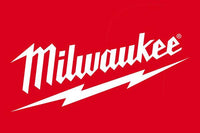
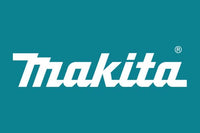

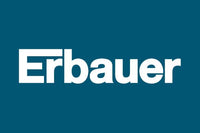
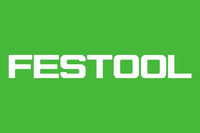

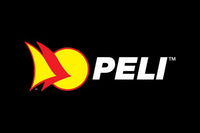
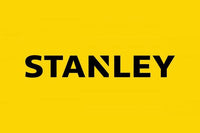
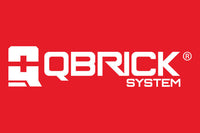

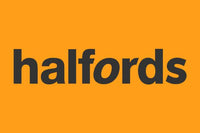
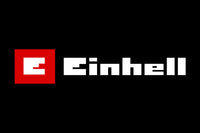

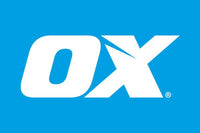
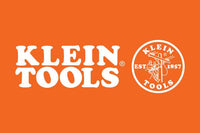
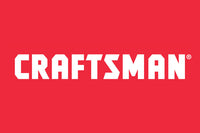
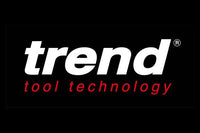
 Kit de corte gratuito para encomendas de qualificação
Kit de corte gratuito para encomendas de qualificação
 Mais de 3.000 críticas positivas
Mais de 3.000 críticas positivas
 Mais de 500 vídeos no YouTube
Mais de 500 vídeos no YouTube
 Suporte no Reino Unido
Suporte no Reino Unido

